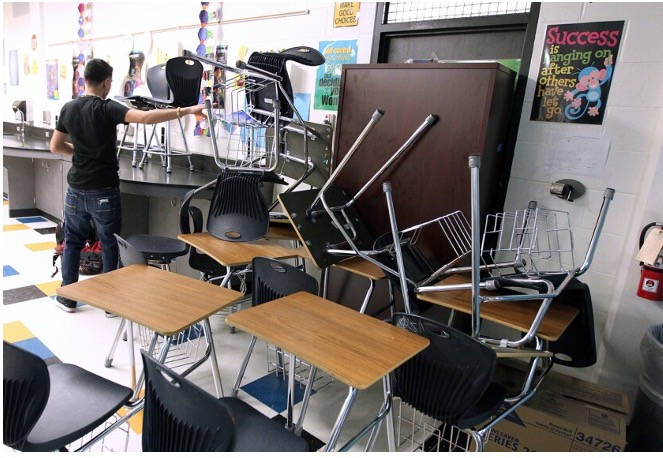Comments
OP/ED - James traipses into the room breathing heavily, backpack slung around his right shoulder, phone clutched in his hand. His knuckles are red; clearly, he’s been holding it tightly for a while. I know why he’s thirty minutes late, stressed, and frantic. He had just experienced his first school lockdown. This one lasted over an hour and a half. His text to me a few hours earlier read, “I think I'm not going to make it today… because my school is on a lockdown and idk how long it will be”. Despite the two busses it takes for him to get to my office, he decided he needed to talk, and as a social worker in training, I was his best option.
Active shooter and other lockdown drills are sadly old news now in US school systems. Yet, educators and families have no psychoeducation readily available for them to help with the questions and aftercare needed after the voice on the loudspeaker says that it is over, and all is okay. According to the most recent available statistics, more than 4.1 million children experience at least one non-drill school lockdown a year. There are curriculums for these threat responses, backed by extensive research and experience. FEMA has guidelines and, for example, the nonprofit The I Love U Guys Foundation has developed a comprehensive program for school safety education and drills that has been “implemented by over 30,000 schools, agencies and organizations”. What is missing from all of the major resources out there that I could find are guidelines for how to address the mental health of students (and staff) after the stress and trauma of both drills and actual lockdowns caused by credible threats.
Back at my office, I got James’s account of the incident. An anonymous kid was AirDropping a note that he was going to shoot up the school in a few minutes and everyone should run. We did some breathing and after he seemed grounded and more relaxed, I asked him what happened when the lockdown was lifted. “Nothing,” he said. “They just told us everything was fine and to go to our next class.” I’m new to this, and I have no kids, so learning the day-to-day of an LAUSD student is a learning curve for me. The more I know, the less I understand.
A close friend of mine called me later that evening and told me how her son (who also attends the school, John Marshall High in Los Feliz) had also been in the lockdown. She was livid at how it was handled and shared with me the email from the principal that parents received afterwards. It provided no real details about the situation and let parents and guardians know that the “safety and wellbeing of [the] students and staff remain [her] top priority.” No mention of support being provided to the students. No mention of tools the families could use to check in with their children and how to help them process their ordeal. After three additional lockdowns at Marshall, the students I talked with seemed numb to these traumatic events.
The fear of mass shootings and violence at schools is engrained in the ethos of our society. A Pew Research study from 2018 showed 57% of teens and 63% of their parents as worried about the possibility of a shooting happening at their school. Examples are plentiful of schools chaotically clearing out because of a loud noise (like when a pipe fell at an Arkansas football game a few years back, or a balloon popping at a high school fair in Vacaville last year). Drills are already scary and stressful but actual unplanned lockdowns add additional fears (understandably) because the students and staff think it could be the real deal.
Months before James came to me about his first lockdown, an LA school teacher, Melissa Crabtree, shared her experience in the LA Times of sheltering in place with her class saying, “you see the fear in your students’ eyes and you feel the fear in your own eyes even though you try to remain calm and quiet…” Statements like this, from faculty and staff trying to appropriately react and process, should be a rallying cry to the school systems that mental health needs to be considered post-lockdowns.
Trauma informed care is needed for our students. There are many evidence-based practices that could be utilized in creating psychoeducation for the adults in their lives to use. A school’s safety plan needs to include these too. If we are to hold principals and school officials like John Marshall’s Dr. Garcia accountable for their statements about how “the safety and wellbeing of… students and staff remain… top priority” there need to be plans and procedures in place. There needs to be additional emphasis on the “wellbeing” of the students, which includes their mental health. Aftercare from school lockdowns needs to be a part of the lockdown protocol in our schools.
(Eric J. Moore (he/him/his), Master of Social Work Candidate, Suzanne Dwork-Peck School of Social Work, University of Southern California - [email protected])






